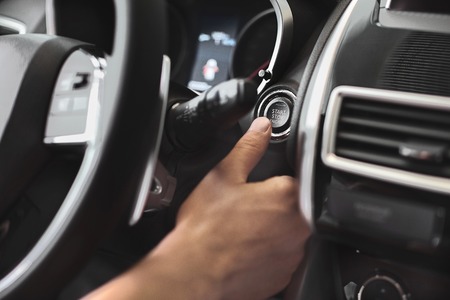1. Introduction
When shopping for a car, youll likely come across both Certified Pre-Owned (CPO) and used cars. At first glance, they might seem similar—theyre both pre-owned vehicles, after all. However, there are key differences between the two, and understanding these distinctions can help you make a smarter purchasing decision. Whether youre looking for reliability, affordability, or extra benefits, knowing what sets CPO cars apart from traditional used cars is crucial.
What Are Certified Pre-Owned (CPO) Cars?
Certified Pre-Owned vehicles are late-model used cars that go through a rigorous inspection and certification process by the manufacturer or dealership. These vehicles typically come with added benefits such as extended warranties, roadside assistance, and a detailed vehicle history report. Because of this, they tend to be more expensive than standard used cars, but they offer extra peace of mind for buyers.
What Are Used Cars?
Used cars, on the other hand, are vehicles that do not go through a manufacturer-backed certification process. They can vary widely in age, condition, and mileage. While used cars may still be reliable, they dont come with the same guarantees and benefits as CPO vehicles, making them a more affordable but riskier option.
Key Differences Between CPO and Used Cars
| Feature | Certified Pre-Owned (CPO) | Used Car |
|---|---|---|
| Inspection | Comprehensive multi-point inspection | May be inspected but not necessarily as thoroughly |
| Warranty | Manufacturer-backed warranty | Usually sold “as-is” with little or no warranty |
| Age & Mileage Limits | Typically newer with lower mileage | Can be any age or mileage |
| Price | More expensive due to added benefits | More affordable but with potentially higher risks |
| Roadside Assistance | Often included as part of the CPO program | Rarely provided |
Why Understanding These Differences Matters
Knowing the key differences between CPO and used cars can help you decide which option best fits your needs and budget. If you’re looking for a like-new vehicle with added security, a CPO car may be the right choice. However, if keeping costs low is your main priority and youre willing to take on some risks, a traditional used car could be the better option. By understanding what each category offers, you can make a more informed and confident decision when buying your next vehicle.
2. What is a Certified Pre-Owned (CPO) Car?
When shopping for a used car, you might come across the term Certified Pre-Owned (CPO). These vehicles offer a middle ground between brand-new cars and traditional used cars. A CPO car has been inspected, refurbished, and certified by either the car’s manufacturer or a dealership to meet specific quality standards.
Definition of a CPO Car
A Certified Pre-Owned car is a used vehicle that has undergone a rigorous inspection and reconditioning process before being resold. Unlike regular used cars, CPO vehicles come with added benefits such as manufacturer-backed warranties, roadside assistance, and special financing options.
Certification Process
To qualify as a Certified Pre-Owned vehicle, a car must pass an extensive inspection. This process ensures that the vehicle meets high-quality standards and is in excellent condition. While the exact steps vary by manufacturer, the typical certification process includes:
- Multi-Point Inspection: A thorough check of key vehicle components such as the engine, transmission, brakes, and tires.
- Refurbishment: Any worn or damaged parts are repaired or replaced to ensure the car is in like-new condition.
- Road Test: A professional test drive to ensure performance, handling, and safety.
- Vehicle History Report: A detailed report to verify the car hasn’t been in major accidents or had serious issues.
Manufacturer vs. Dealership Certification
CPO certification can come from the vehicle’s manufacturer or from an independent dealership. Here’s how they compare:
| Certification Type | Inspection Standards | Warranty Coverage | Other Perks |
|---|---|---|---|
| Manufacturer Certified | Follows strict factory guidelines | Backed by the brand’s official warranty | Roadside assistance, free maintenance, special financing |
| Dealership Certified | Varies by dealership | Usually covered by a third-party warranty | May include additional perks, but not as comprehensive |
CPO Eligibility Requirements
Not every used car qualifies for CPO certification. Manufacturers and dealerships set certain requirements, which typically include:
- Age Limit: Most CPO programs only accept vehicles that are less than 5-7 years old.
- Mileage Limit: The car must usually have fewer than 60,000 to 80,000 miles.
- Maintenance History: A vehicle with a clean service record is more likely to qualify.
By meeting these strict standards, CPO cars provide buyers with greater confidence compared to traditional used vehicles. In the next section, we’ll dive deeper into how used cars differ from CPO models and why some buyers might prefer one over the other.

3. What is a Used Car?
A used car is any vehicle that has had at least one previous owner. Unlike Certified Pre-Owned (CPO) vehicles, which go through a detailed inspection and certification process, used cars are typically sold as-is unless the dealer offers additional warranties or reconditioning.
How a Used Car Differs from a CPO Vehicle
While both CPO and used cars have been previously owned, their key differences lie in their condition, warranties, and inspection standards. Heres a comparison:
| Feature | Certified Pre-Owned (CPO) | Used Car |
|---|---|---|
| Inspection | Multi-point, manufacturer-certified inspection | Varies by seller, may not have any formal inspection |
| Warranty | Manufacturer-backed limited warranty | Typically sold “as-is” unless additional warranty is purchased |
| Condition | Must meet strict age, mileage, and condition requirements | Condition varies, may have wear and tear |
| Price | Higher than regular used cars due to certification and warranties | Generally more affordable but may require repairs |
What to Expect When Buying a Used Car
When purchasing a used car, its important to do your homework. Since these vehicles do not go through the same rigorous inspections as CPO cars, buyers should take extra precautions. Here are some key steps:
1. Check the Vehicle History Report
Using services like Carfax or AutoCheck can help you see past accidents, title issues, and maintenance history.
2. Get a Pre-Purchase Inspection
Have a trusted mechanic inspect the car before buying to avoid unexpected repair costs.
3. Understand the Warranty (or Lack of One)
Many used cars are sold as-is. If a dealer offers a warranty, read the terms carefully.
4. Test Drive and Negotiate
Always test drive the car to check for any issues. Used car prices are usually negotiable, so dont hesitate to negotiate for the best deal.
4. Key Differences Between CPO and Used Cars
When deciding between a Certified Pre-Owned (CPO) car and a regular used car, it’s important to understand the key differences. Several factors make CPO vehicles stand out, including pricing, warranties, vehicle inspections, and overall reliability.
Pricing
One of the biggest differences between CPO and used cars is the price. CPO vehicles tend to be more expensive than regular used cars because they come with additional benefits such as warranties and inspections. However, for buyers who want a peace of mind, the extra cost might be worth it.
Warranties
CPO cars typically come with manufacturer-backed warranties, which provide extended coverage beyond the original warranty period. In contrast, most used cars are sold “as-is,” meaning buyers are responsible for any future repairs. Some dealerships may offer limited warranties on used cars, but they rarely match the coverage of a CPO program.
Vehicle Inspections
Another key difference is the inspection process. CPO vehicles undergo a rigorous multi-point inspection conducted by certified technicians to ensure they meet the manufacturer’s standards. On the other hand, used cars do not have a standardized inspection process and may vary in condition depending on their history and previous owners.
Reliability
Since CPO cars go through a thorough inspection and reconditioning process, they are generally more reliable than regular used cars. Manufacturers ensure that CPO vehicles meet specific standards, reducing the risk of unexpected breakdowns. Used cars, on the other hand, can vary significantly in reliability based on factors such as maintenance history and mileage.
Comparison Table
| Factor | Certified Pre-Owned (CPO) | Used Car |
|---|---|---|
| Price | Higher due to added benefits | Lower but no added guarantees |
| Warranty | Manufacturer-backed warranty | Usually sold “as-is” |
| Inspection | Rigorous multi-point inspection | Varies, may not be inspected |
| Reliability | More reliable due to inspections | Depends on vehicle history |
By understanding these key differences, buyers can make a more informed decision based on their budget and level of risk they are willing to take.
5. Benefits of Choosing a CPO vs. Used Car
When deciding between a Certified Pre-Owned (CPO) vehicle and a traditional used car, its important to understand the key benefits each option offers. While used cars tend to be more affordable, CPO vehicles provide added advantages like warranty coverage, multi-point inspections, and lower risk.
Warranty Coverage and Inspection
One of the biggest advantages of a CPO vehicle is the manufacturer-backed warranty. Unlike standard used cars that may no longer have warranty coverage, CPO vehicles typically include extended warranties, covering major components. Additionally, CPO cars undergo rigorous multi-point inspections and reconditioning, ensuring they meet high-quality standards before being sold.
Lower Risk vs. Lower Cost
CPO vehicles come with added peace of mind due to their thorough inspection process and warranty coverage. This means fewer unexpected repairs and lower maintenance costs in the long run. On the other hand, used cars usually have a lower purchase price, which can be appealing for buyers on a budget.
| Feature | Certified Pre-Owned (CPO) | Used Car |
|---|---|---|
| Warranty Coverage | Manufacturer-backed warranty | Usually sold “as-is” |
| Inspection Process | Comprehensive multi-point inspection | Varies by seller, may have unknown issues |
| Vehicle Condition | Refurbished to meet manufacturer standards | Depends on previous owner and maintenance |
| Price | Higher than traditional used cars | Lower purchase price |
| Risk of Repairs | Lower due to certification and reconditioning | Higher, may need repairs sooner |
Better Financing Options for CPO Vehicles
Many dealerships and lenders offer special financing rates for CPO vehicles, which can make monthly payments more affordable compared to financing a traditional used car. Certified vehicles often qualify for lower interest rates, making them a more attractive option for buyers who plan to finance their purchase.
Roadside Assistance and Extra Perks
Another benefit of going with a CPO car is that many programs include extras like roadside assistance, rental car reimbursement, and even free maintenance services for a limited period. These perks add further value and security to your investment.
Which Option is Right for You?
When choosing between a CPO and a used car, consider whats most important to you: upfront savings or long-term reliability. If you prefer a vehicle with added peace of mind, warranty protection, and lower repair risks, a CPO car may be the better choice. However, if budget is your top priority and youre comfortable taking on some uncertainties, a traditional used car might be the way to go.


